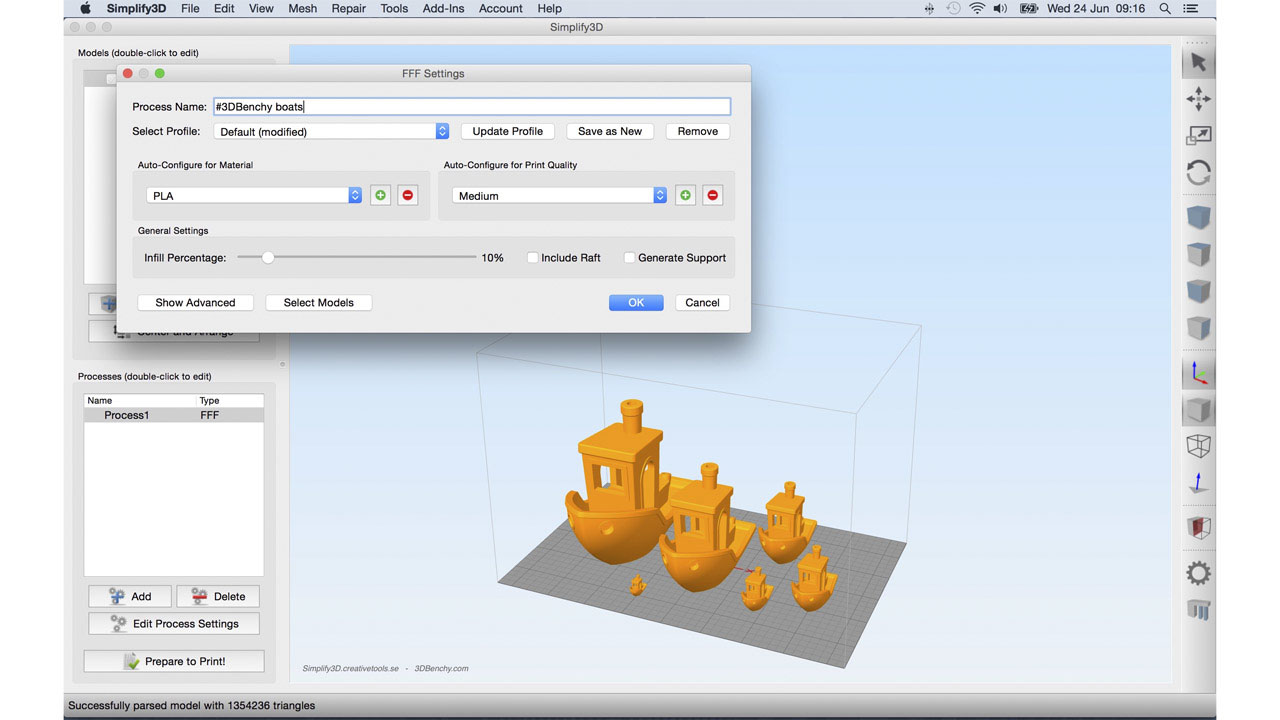
However, TPU can easily bend and distort in the extruding mechanism no matter which 3D printer you use. (Travel distance is the length of the path which nozzle travels without extruding filament.) So retraction is preferred, especially in print designs with long travel distances. However, retraction can be of great help when it comes to reducing strings and improving print quality. Some people like to turn off retraction in Cura settings for TPU to avoid extruder jamming. This parameter usually doesn’t make problems. Yet, you can set it as low as room temperature. However, high temperatures can cause several issues like the elephant foot problem. You can use more adhesives and decrease the bed temperature or increase it to get better first-layer adhesions. The best amount of Build Plate Temperature depends on the printer and its bed surface.

You can start with the manufacturers’ minimum recommended temperature. The optimized nozzle temperature for TPU is around 220 to 240° C. On the other hand, low nozzle temperature will decrease layer adhesion and strings. This phenomenon is heavily dependent on filament quality. High temperature can also make the filament thickness unstable as it leaves the nozzle. Higher temperatures can improve layer adhesion but create hairy prints. The temperature has a remarkable impact on filament liquidity. It’s a good idea to set the infill as high as 100% for functional parts. Some designs need more infill than others, but the infill percentage should be more than 30% as a general role of thumb. Decrease the infill, and you will get low surface quality. TPU filaments need better supports, and so they are more sensitive to low infill. Depending on the filament flexibility and manufacturer, you can increase this value up to 0.3 for less flexible filaments. However, It should be much lower with more flexible filaments.Ġ.1mm layer height is a safe value for the beginning. You can set it as high as 0.3 for typical PLA prints. The right height can produce even layers and improve print quality. Layer height is one of the most critical factors. 150 to 200 mm/s is a good range, although higher values are also allowed. However, Increasing the travel speed by too much can damage your printer in the long run. Slow Travel speed can cause more stringing by holding the nozzle in the air. It’s also important to record the best setting parameters and save the profile after your successful print. But bear in mind that quality is often more important than printing time. So you need to slow down the whole process of printing.ģ0 mm/s is a safe speed to start with you can always increase this speed, as long as it doesn’t affect your printing quality. Also, a high printing speed can cause oozing and stringing. Cura Settings for TPU Printing Speedįlexible materials like TPU tend to jam and distort.
#Setting presets simplify 3d how to
You can download the complete Cura profile from hereand watch this videoto learn how to import profiles.

So the exact setting may not suit your printer or filament brand, but it can be a good start. The 3D printer has received some upgrades, including a direct drive system and custom filament guide.
#Setting presets simplify 3d pro
The below table shows the setting I use for Ender 3 pro and Ployflex filament from Polymakers. Sooner or later, you will get the gist of it. Note that it’s normal if the first results weren’t satisfactory. To print TPU, you can start with a tentative setting and then change some parameters to reach your desired outcome. With TPU, you can create specialized phone covers, flexible grippers, toys, etc. Nothing more needs to be done to enable presets: once published as SBSAR, your presets will be available in Substance Painter after import.Nowadays, 3D printers can use a wide range of filaments, from rigid to flexible, and TPU filaments are probably the most flexible filaments in the market.Īlthough Printing TPU can be challenging, the ability to print TPU can open lots of opportunities. Press the minus sign next to a preset to remove it. Modifying as well as removing them happens by clicking the gear icon next to the dropdown and the + icon.

The preset is immediately created and stored.Įmbedded presets can not be modified afterwards, though they can be renamed.


 0 kommentar(er)
0 kommentar(er)
